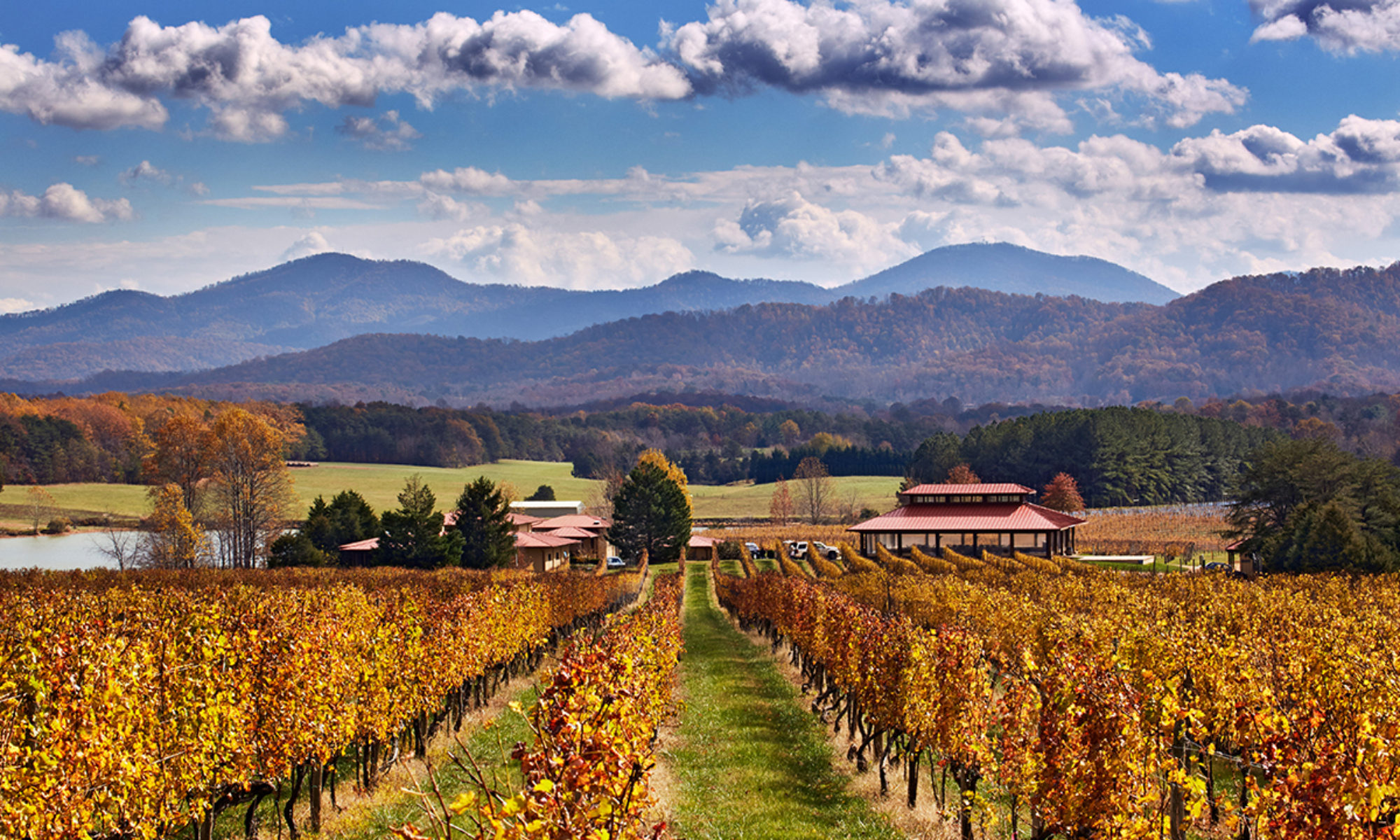Located south of Leesburg on Evergreen Mills Road, less than an hour from Washington, Fleetwood Farm is one of the most recent arrivals on the Loudoun winery scene, and an unusual solution to “empty-nest syndrome.” Jamie McClellan and Skip Edgemond’s turned to the new challenge of opening a winery as their last child left home in Reston. The winery opened in late 2018, and 2019 marked the first harvest.
Wine. Tier III. Edgemond owns Greenworks Landscaping in Chantilly and has decades of experience in horticulture, but neither owner had worked in the wine industry. As is the case for many new wineries, veterans on the scene have stepped in to help. Slater Run winemaker Katell Griaud will use the first Fleetwood Norton grapes in a port-style bottling, while Winery at Bull Run winemaker Ashton Lough will do custom crush work. For now Fleetwood offers several house bottles made with Virginia grapes and out-of-state fruit, in addition to a secondary tasting list featuring bottles from Bordeaux.
Setting. One star. Fleetwood Farm is set on a historic Leesburg plantation, known alternatively as Peggy’s Green and Greenhill Plantation. The grounds are beautiful. The Federal-Style house was built c.1775 by an otherwise little-known Tidewater planter, William Ellzey. The property is also used as a wedding venue.
Stories. The Plantations of Leesburg. The earliest settlement of Virginia was by small farmers, surviving difficult times at Jamestown and in the Tidewater, and expanding slowly in the south and center of the colony’s coastline. Settlement of the northern section of Virginia began very differently. After the English Civil War, in 1660, King Charles II divided up the northern section of the colony into grants for a handful of aristocrats who had supported him, called “Cavaliers.” Lord Fairfax, who got the giant Northern Neck grant, sold off large sections to other aristocrats, including some of the now-wealthy planters from the Virginia Tidewater. Much of this land remained off-limit to Europeans, however, until the 1722 Treaty of Albany relocated the Iroquois to the west of the Blue Ridge. Beginning in the late 1720s and the 1730s, many of the first settlers of what became Loudoun County were Virginia tidewater planters who moved in and established large farms and plantations in the area. Two of the first in the area which became Leesburg were Colonel Thomas Lee, and Nicholas Minor. Lee, whose brother was a great-grandfather of Confederate General Robert E. Lee, became the resident manager of the Northern Neck grant for Lady Catherine Fairfax. As he traveled throughout the colony, Lee was impressed with the unoccupied land where the Potomac River and Goose Creek met, and made arrangements to have 800 acres of that land set aside for himself. Thomas Lee had many notable sons, including two signers of the Declaration of Independence: Francis Lightfoot Lee and Richard Henry Lee. Both the sons lived on their father’s estate, named Coton Plantation, where the Potomac River and Goose Creek meet, and which is today part of the Landsdowne Resort. Coton Plantation lay east of a major intersection, where the Old Carolina Road (part of the major north-south Native American trail, and now Route 15) and the Potomac Ridge Road (now Route 7) cross. A tavern was set up at that intersection by Nicholas Minor, who owned Fruitland Plantation, just west of the Lee’s estate at Coton. Minor dubbed the group of building around his tavern George Town in honor of the English King, the name being changed in 1758 to Leesburg in honor of Thomas Lee. Fruitland’s residence was on a knoll on the south side of the road about a mile east of the present Leesburg, where a later building bore the same name. Miner among other things made brandy from peaches, apples and persimmons, though apparently not wine. In 1799, the Lee family built another plantation just below Coton, Belmont Manor. Belmont was built by a son of Richard H. Lee, Ludwell Lee, who had been an aide-de-camp to General Lafayette. Today the site of the Belmont Country Club, the Belmont Manor House hosted many distinguished guests, including Presidents John Quincy Adams and James Madison. Later owners included Mr. & Mrs. Edward B. McLean: Mrs. McLean once owned the Hope Diamond, and Mr. McLean brought foxhunting and thoroughbred racing, to Belmont. A nephew of George Mason, Armistead Thomson Mason, established Selma Plantation in 1815, on the north side of Leesburg. Selma has recently been restored. Still on the east side of Leesburg, but north of Coton Plantation stood the plantation of Exeter House, built in 1790 by a nephew-in-law of George Mason. The Civil War Battle of Ball’s Bluff was fought on the plantation’s lands, with Confederate General Jubal Early using the house as a headquarters. Exeter House was destroyed by fire in August 1980. Yet possibly the two best-known plantations today were on the south side of Leesburg: Oak Hill, where President James Monroe wrote the Monroe Doctrine in 1823, and Oatlands Plantation. Oatlands was founded in 1798 by George Carter, a great-grandson of Robert “King” Carter. Along with the Federal-style house, the plantation had terraced gardens, slave quarters, barns, and smokehouses, as well as a greenhouse and gristmill. Carter did not stick to tobacco: he grew wheat and other small grains, raised sheep for wool, build a mill complex on nearby Goose Creek for the grinding of grain and milling of timber. Most importantly, he developed a vineyard (which was never heard from again). The plantation also housed the largest slave population in Loudoun County, numbering 128 people. Oatlands was donated to the National Trust for Historic Preservation in 1965 and is now a major event center for northern Virginia. Of all these plantations, only Oatlands can be visited today.
